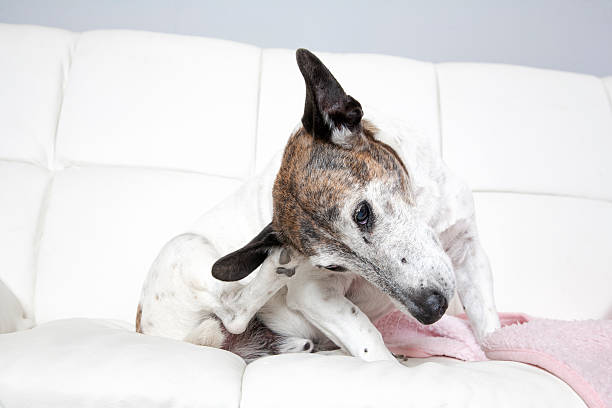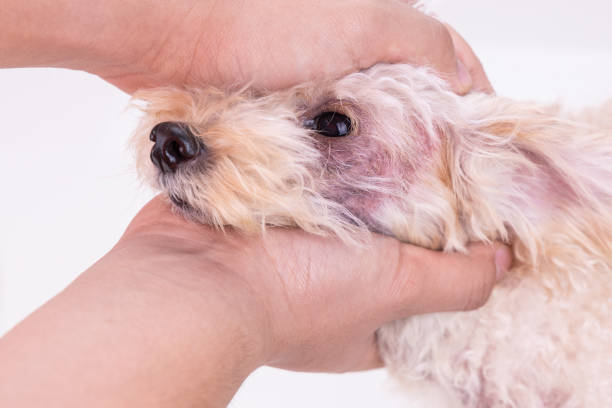The problem of incontinence is commonly experienced by dogs and it is one of their major health concerns. It can be triggered by several factors, among them natural aging or the weakening of the bladder due to an injury. In case your dog shows signs of incontinence, it’s advisable to get in touch with your vet to identify the potential triggers and find the most suitable treatment!


There are many different types of incontinence in dogs that can be attributed to physical and behavioural causes. These are arthritis, urinary tract infection (UTI), spina bifida, prostate disease, diabetes mellitus (DM), neurological dysfunction, etc.
The age at which these problems develop varies but often begins at about five years old for males and eight years old for females. If your dog is incontinent, it may be inappropriate to urinate in the house or unusual locations not easily accessible for typical cleanup.
Unfortunately, there are many possible causes of canine incontinence. When you notice your dog dribbling urine, the first thing to do is take a urine sample to the vet for analysis. The vet will also want to examine your dog’s teeth and examine its glands for any tumour formation.
Additionally, blood tests can identify problems such as diabetes mellitus. X-rays can show signs of arthritis or spina bifida. A more invasive diagnostic technique involves cystocentesis for fluid analysis to check for UTI, which is also used to assess the level of sugar in diabetics.
Treating Dog Incontinence
Suppose your dog’s incontinence is due to a lack of muscle control. In that case, your vet may prescribe phenylpropanolamine, which helps restore muscle tone to the sphincter. Suppose your dog’s incontinence is due to other causes, such as diabetes mellitus or arthritis. In that case, your vet will treat those conditions first before trying medications for urinary incontinence.
You must follow all instructions from your vet, as the methods for treating incontinence vary based on its exact cause.
In addition to medications, there are several other things that you can do at home to alleviate your dog’s incontinence:
You may have heard that doughnut-shaped dog beds help dogs with weak bladders to retain their preferred posture while lying down and not dribble all over the floor. It is advisable to place absorbent pads underdog beds or anywhere your dog lies down. You can use a cloth that you must regularly wash, chemical-free disposable pads for urine absorption, or a bladder control dog mat. Dog mat is worn like underwear, but it has added padding that absorbs urine before getting to the floor.
If there is evidence of disease or damage that causes incontinence, then treatment usually begins with medication. For example, your dog may be given a daily anti-anxiety pill for incontinence attributed to separation anxiety or thunderstorm phobia. Some vets will prescribe phenylpropanolamine as a supplement to treat incontinence due to neurogenic bladder problems. (The FDA has not approved phenylpropanolamine for use in dogs, but it is available in low doses under veterinary supervision).
The best way to treat incontinence is to consult a vet or specialist in this area, as they can recommend the best course of action. In the meantime, however, some precautions can be taken at home. One suggestion is shaving your dog’s rear end for better clean up. Another option would be to place absorbent bedding (e.g., puppy pads) in the areas where your dog frequently goes to decrease the likelihood of accidents. If your dog has diabetes mellitus, keep its blood sugar under control by monitoring food intake and insulin injections or oral medication as recommended by your veterinarian.


What You Can Do
Besides medication, there are some simple things you can do to help your dog overcome incontinence. For example, if urinary accidents occur after leaving your dog at home alone, consider leaving a radio playing and placing food and water in easily accessible locations.
Conclusion
If your dog is suffering from incontinence, there are steps that you can take to help them feel more comfortable. One option would be to shave the area around their rear end, so they’re not constantly dripping urine while lying down. There are bedding options for dogs with weak bladders like doughnut-shaped beds and disposable pads that absorb the liquid before reaching the floor.
If you have a diabetic dog, we recommend monitoring food intake and insulin injections or oral medication as advised by your veterinarian. We hope this article has helped you understand how to identify and treat dog incontinence.


